How to Identify Kashan Rug? (History, Value, Design, Price)
The scenic city of Kashan has been one of Iran’s top tourist attractions and locations, embracing magnificent historical monuments and landscapes. Not only is Kashan famous for its fantastic landmarks and history, but also for the Kashan Persian rugs that are admired worldwide. In the Eastern world, rugs are necessary items in a household and decorate the environment with their vibrant colors. The distinctive patterns and colors on the Kashan Rugs have always impressed visitors traveling to Iran. You can find carpet and rug markets in the Grand Bazaars in Iran and cherish the unique experience.
What is a Kashan Rug?
Since the olden days, Iran has been one of the best producers of high-quality handmade rugs in the world. The historical city of Kashan is popular for the production of the finest and the most expensive fabrics in Iran.
Today, most of the modern Iranian factories and fabric manufacturers are the descendants of fabric suppliers in Kashan. Fabrics such as velvet, satin, taffeta fabrics, and many more have given Iran a significant reputation throughout the entire globe.
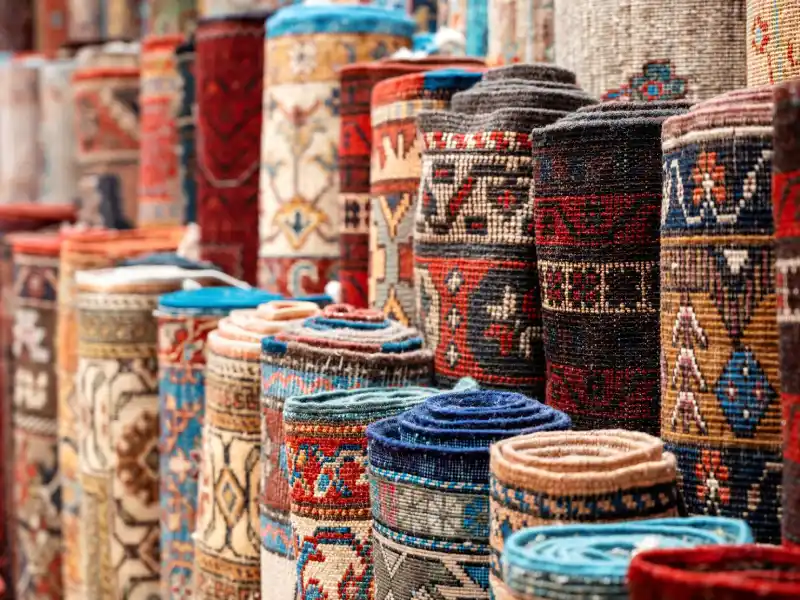
One of the most significant qualities of Kashan rugs is their very fine texture, in a way that the details of all the patterns are clearly visible, as well as their velvet-like surface, which is excellent due to the use of merino wool.
Kashan Rug Materials
For weaving Kashan rugs and carpets, cotton thread is mainly used as the warp and weft, and silk thread is used only in weaving delicate rugs.
In terms of making the rugs, the under weft in these rugs is thicker than the upper weft. For weaving the wefts, two types of Kashan yarn with the names Shahri and Isfahani are used.
The primary difference between these two types of thread is their thickness. In this case, the 10-layer Isfahan weft is equivalent to the 12-layer Shahri weft since the Isfahan yarn is much thicker.
Rug Production in Kashan
Kashan Persian rugs are one of the most exquisite and aesthetical rugs in the world. Annually, Kashan produces 1500 meters of handmade rugs. 60 percent of Iran’s machine-made rugs and 70 percent of Iran’s Kashan rug exports are produced in the city of Kashan.
Kashan Rug Masters
Amongst the hand-woven rug masters and professionals in Kashan who are renowned for their extraordinary skills in creating peculiar textures, geometrical shapes, and colorful patterns on rugs are Mirza Nasrollah, Afsari, Karimpour, Isfahanian, and master Taqdisi.
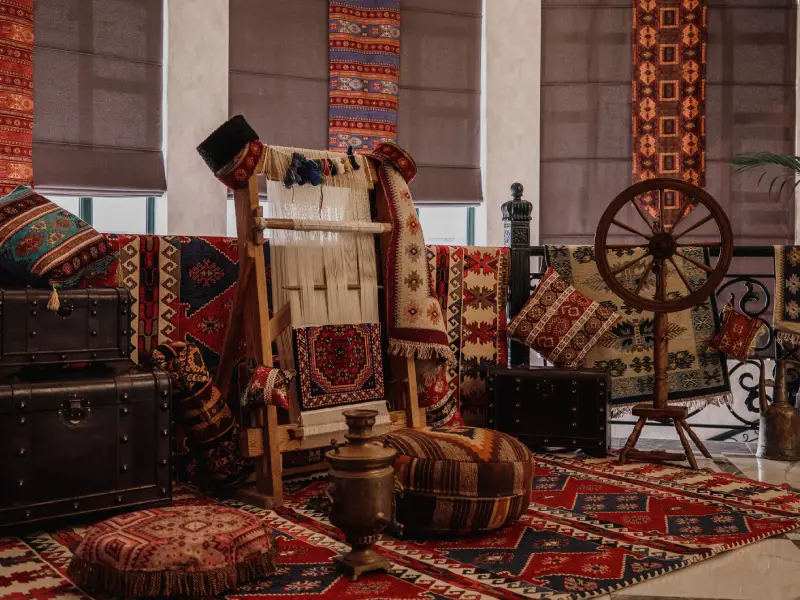
The Persian rugs produced by these masters are remarkable and were produced in a very short period compared to other artists. Some of these masters are currently working in the Kashan rug industry and have shown the world the honorable value of the art of carpet making in Iran.
Kashan Rug History
Kashan Rug’s origins date back to the 15th century and are one of the oldest rugs in the world. The historic Silk Hill is the origin of the traditional rug weaving skills of Kashan, and based on the archeological discoveries, it is believed that the Kashan Rugs belong to the Hammurabi era, the “King of Babylon”.
The people of this region were first known as Kasu or Kashu, which was later changed to “Kashan”. According to some historians, the city of Kashan was built by the order of Harun al-Rashid’s wife.
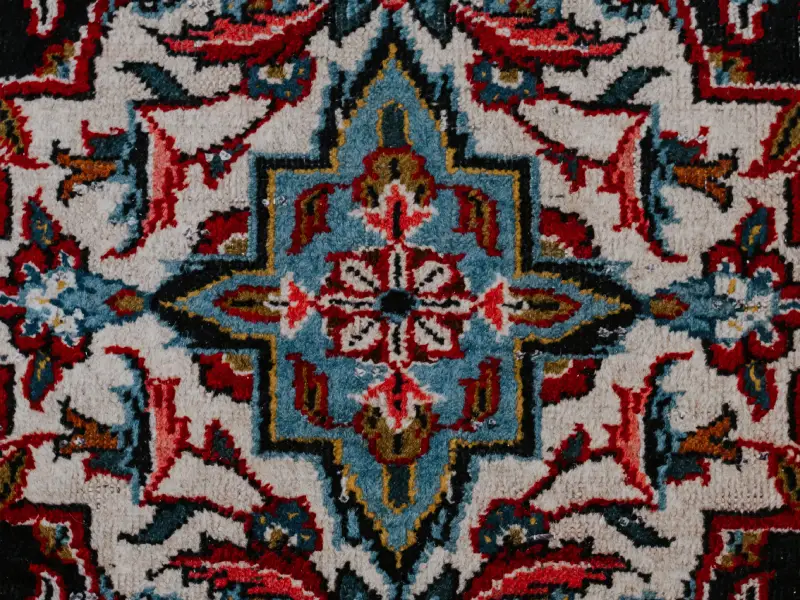
The pictures and motifs of the discovered silk dishes and pottery, numerous works of handlooms, clothes, underlays, or silk carpets validate the presence of the art of weaving and textile that existed in this region since the beginning.
The high-quality fabrics in Kashan that were sold under the name of Hormozi fabrics made the country’s name and art widespread in the world. In the past, the people of Kashan used to weave fabrics and clothes that had simple silk fabrics, damask silk fabrics, or silk mixed with gold and silver.
Kashan Rugs in the Safavid Dynasty
Another brilliant feature of the traditional Kashan Rugs is the production of radiant rugs during the Safavid Dynasty (17th Century) that are now kept in museums and large collections in the country.
It’s interesting to know that the silver woven and zarbaf silk rugs also known as Shah Abbasi rugs that were used in the Shah Abbasi Caravanserai of Nishapur were also made in Kashan.
Therefore, Kashan has played an important role in reviving Persian artistry through the production of stunning and colorful Kashan rugs.
The works discovered in Kashan exhibit that such rich and precious fabrics were produced in this cultured city in the distant past.
Many notable figures like Marco Polo, Sir John Chardin, and Anthony Shirley have specified about how much they appreciate the Iranian art and the beauty of the Kashan Persian rugs, carpets, and textiles.
How to identify a Kashan rug?
Hand-woven Kashan rugs are made in 3 different patterns: they are Toranj, Afshan, and Kheshti.
Toranj Rugs
Among the three, Toranj rugs have attracted many customers all over the world and are one the bestselling works of Kashan textile art in the market. Toranj rugs are one of the most common rugs in Iranian homes.
The wide borders around the edge of the rug and the oval or circular shape in the center of the rug are one of the main characteristics of Toranj rugs.
The symmetrical shapes and pictures woven on the four quarters of the rug that connect to the central oval or the Mehraab together create a focal point on the Kashan rug.
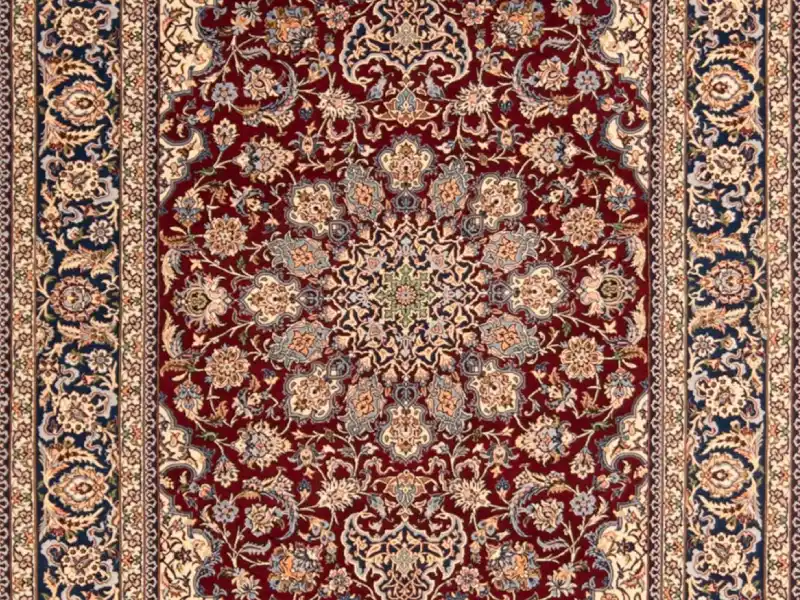
Toranj rugs are based on the architecture from the Parthian Empire (247 BC to 224 AD) in Iran. The patterns found on the rugs are derived from the plastered patterns found on porches, courtyards, and buildings in that era.
The triangles on the four corners illustrate the green gardens of ancient houses where the families gathered, and the oval or circle in the center of the carpet depicts the pond in the middle of their yards.
Afshan Rugs
Afshan pattern and design later developed after the Toranj design. Its features differ from the previous design, which is the absence of the triangles and the oval that was used in Toranj rugs, however, the borders around the edge still remain in this design.
The term “Afshan” in Persian translates to “scattered or irregular,” meaning the patterns made on the rugs are all irregular shapes that collectively form an elegant pattern.
In the center of the rug are multicolored flowers with long stems and leaves, and at the end of each flower stem blooms another vibrant stem up to the edge of the rug.
Kheshti Rugs
Last but not least is the delicate Kheshti design. As the most recent design among the other rug designs, the Kheshti rugs are also very popular in the Iranian market.
“Khesht” in Persian means clay, and the background of the rug is as if it is covered in clay, which is why it is called “Khesti” rugs.
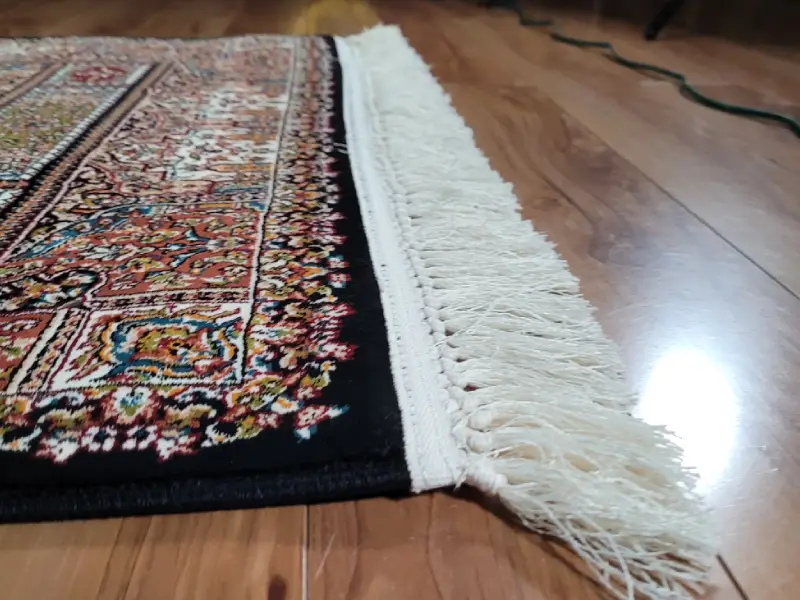
The major feature of this rug pattern is the equal-sized squares that cover up the entire surface of the Kashan rug, and each square includes dazzling flowers and leaves. The patterns inside the squares are not symmetrical and rather show the luxury of the Kheshti design.
Although the designs and patterns on Persian Kashan rugs are not limited to these three prominent rug designs in Kashan. There are several other patterns that you may find to your liking, like the Gebeh, Turkmen, the pot and tree, Mohtasham, animal patterns, the paisley pattern, and the prayer (Sajjadeh) pattern.
Modern Kashan Rugs
In addition to the hand-woven rugs in Kashan, the city is also popular for its machine-made rugs. The development and production of machine-made rugs in Kashan began in 1945, and since then, the manufacturers have established more than 600 small and large Kashan Rug manufacturing firms.
Like other parts of the country, machine-made rugs are more reasonable and inexpensive compared to handmade rugs. The price varies for various reasons, such as the speed of rug production by a machine as well as the raw materials used in making the rugs.
Kashan Rug Price
The price of rugs varies in size, the method of production, the materials used, the type of patterns and textures, and the manufacturer. As mentioned earlier, rugs and carpets fall into two categories: hand-woven and machine-woven.
The price of hand-woven rugs is much higher than machine-woven rugs. Because hand-woven rugs are made by artists knot by knot, the rug holds great value due to the hard work in making it.
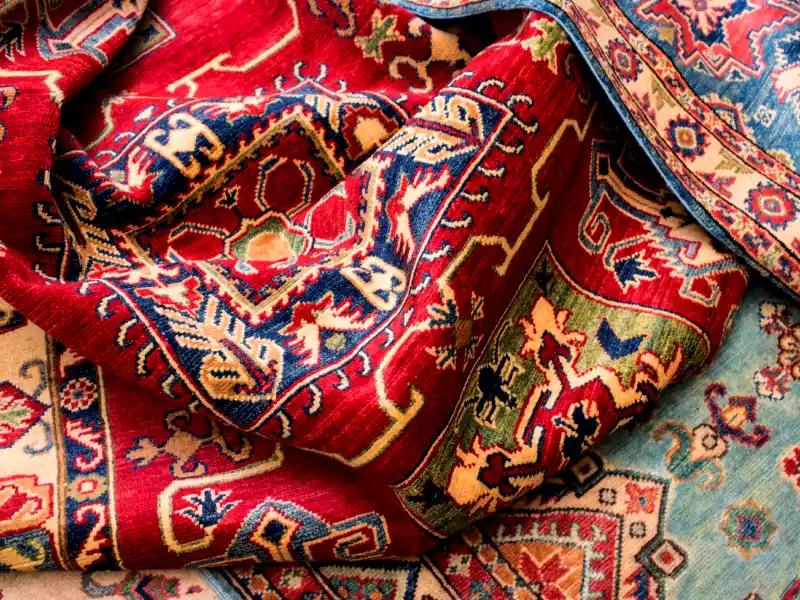
The price of hand-woven Kashan rugs starts from around 5 million Tomans (Iranian currency) to 1 billion Tomans, depending on the said attributes.
Modern Kashan rugs are made with machines and vary according to the number of knots and size. The Kashan Rug factory produces 700, 1000, 1200, and 1500 knot machine-made rugs.
Each of these rugs contains three different sizes that are 6 meters (small), 9 meters (medium), and 12 meters (large). Machine-made rugs have a lower cost, so prices start from 2 million Tomans up to 10 million Tomans or more.
Finally
Kashan Rugs have always been the best in the world for a long time, and you can identify the Persian Rugs with the vibrant Kashan rugs in the world market. With the advancement of technology, machine-made rugs have been produced in bulk and are exported to many countries abroad.
There is no doubt about the high quality of the machine-made rugs compared to the hand-woven rugs. However, Kashan hand-woven carpet is definitely one of the best examples of hand-woven carpets in Iran and the world.
Are you planning to travel to Iran and looking for an Iran resort? Consider Matinabad eco resort.
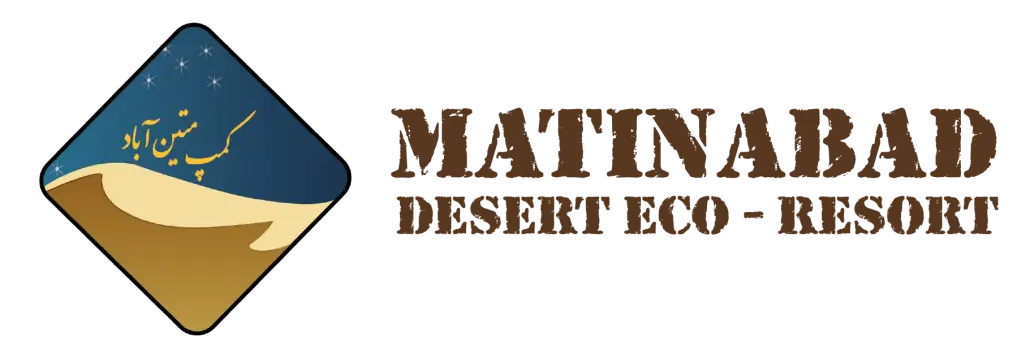




Leave a Reply
Want to join the discussion?Feel free to contribute!